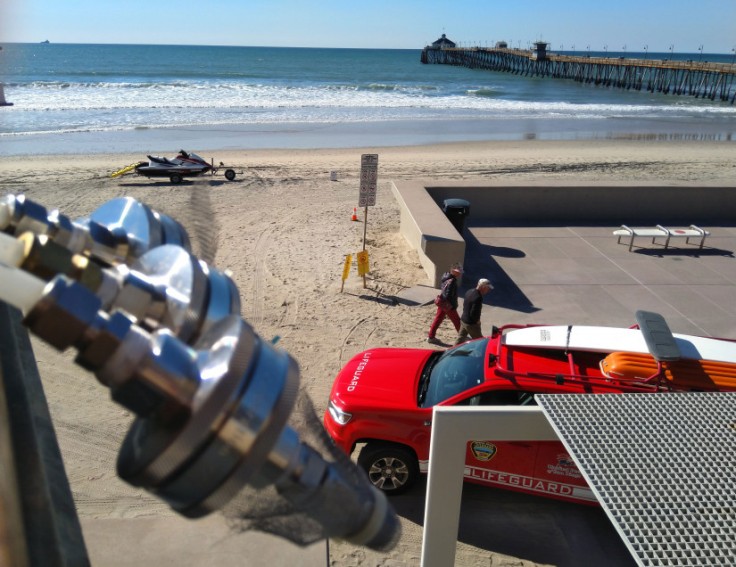People are breathing in more than just oxygen and dust.
The Scripps Institution of Oceanography (SIO) at UC San Diego recently revealed that coastal water pollution transfers into the atmosphere in sea spray aerosol, allowing people to breathe in bacteria and other harmful substances from the seawater.
The researchers report their findings in the journal "Environmental Science & Technology," per Interesting Engineering.
Bacteria From Sea Spray Aerosol Findings

Researchers led by Kim Prather discovered that up to three-quarters of the bacteria people breathe in at Imperial Beach are coming from the aerosolization of raw sewage in the beach's surf zone, per the SIO. This aerosolization happens when waves break and bubbles burst in Imperial Beach's surf zone, allowing the polluted water to transfer these harmful substances into the atmosphere.
She also revealed that not only do people breathe in bacteria from the polluted waters, but also viruses and chemical compounds found in the polluted seawater.
Prather a Distinguished Chair in Atmospheric Chemistry and a Distinguished Professor at Scripps Oceanography and UC San Diego's Department of Chemistry and Biochemistry. She is also the funding director of the NSF Center for Aerosol Impacts on Chemistry of the Environment.
The pollution of Imperial Beach was made possible through the dumping of untreated sewage into the Tijuana River, which flows into the Pacific Ocean. According to the researchers' study, an estimated 13 billion gallons of sewage-polluted waters entered the Pacific Ocean through the Tijuana River on Dec. 28, 2022.
To find these conclusions, Prather's team sampled coastal aerosols at Imperial Beach and water from the Tijuana River between January and May 2019. They also used DNA sequencing and mass spectrometry to link bacteria and chemical compounds in coastal aerosol back to the polluted Tijuana River flowing into coastal waters.
Although the team did conclude that the aerosols Imperial Beach launches into the atmosphere contain bacteria from the Tijuana River, they are now conducting follow-up research to detect viruses and other airborne pathogens.
Additionally, while the aerosol coming from Imperial Beach contain bacteria and viruses, most of them are harmless, and the presence of bacteria in sea spray aerosol doesn't automatically mean that microbes - pathogenic or otherwise - become airborne.
However, researchers said that they need to further investigate the microbes' infectivity, exposure levels, and other factors that determine risk.
Implications Of The Study
Prahter believes that people at and close to polluted coastal waters should worry about the air they breathe in due to her teams' findings. "Coastal water pollution has been traditionally considered just a waterborne problem," Prather said. "People worry about swimming and surfing in it but not about breathing it in, even though the aerosols can travel long distances and expose many more people than those just at the beach or in the water."
Matthew Pendergraft, the study's lead author and a recent graduate from Scripps Oceanography who obtained his Ph.D. under Prather's guidance, said that their research shows that coastal communities are exposed to coastal water pollution even without entering polluted water.
He also mentioned more research is needed to determine the level of risk of the viruses and harmful substances being aerosolized in the ocean to provide further justification for prioritizing cleaning up coastal waters.
Related Article : Venice's Renowned Canals are Drying Up Due to Climate Change









